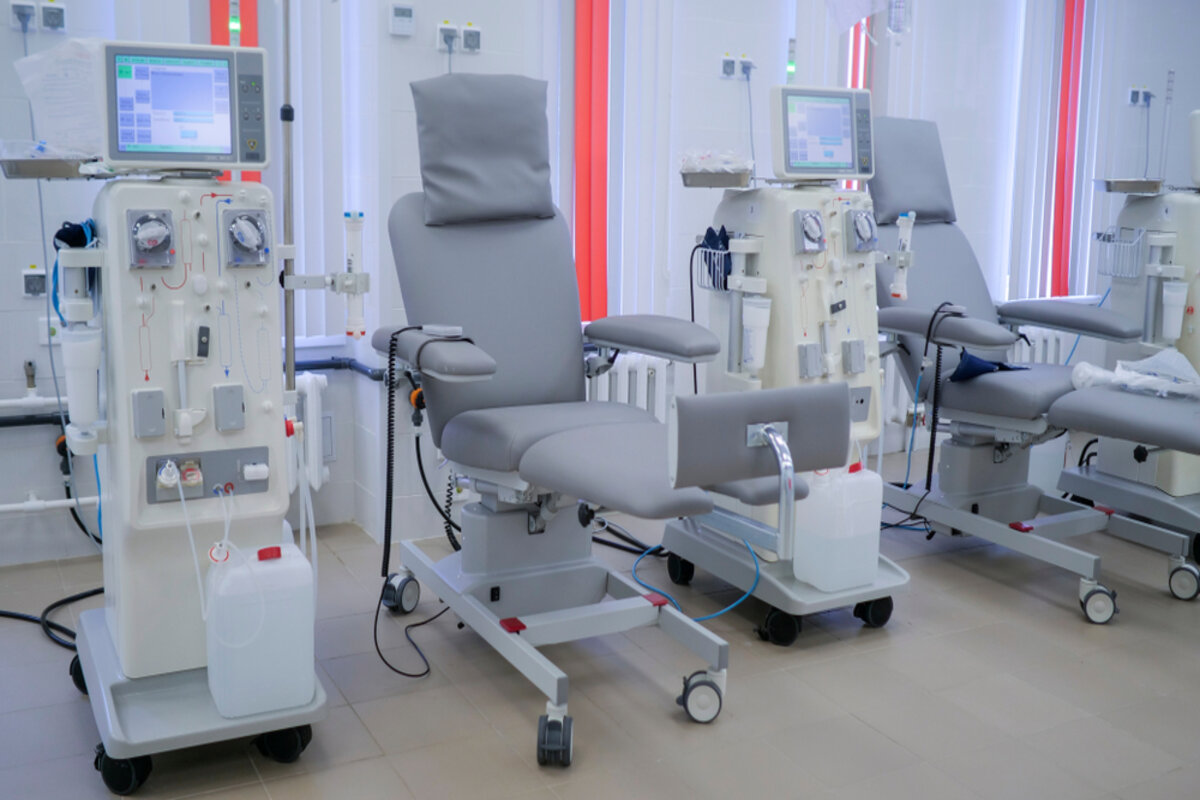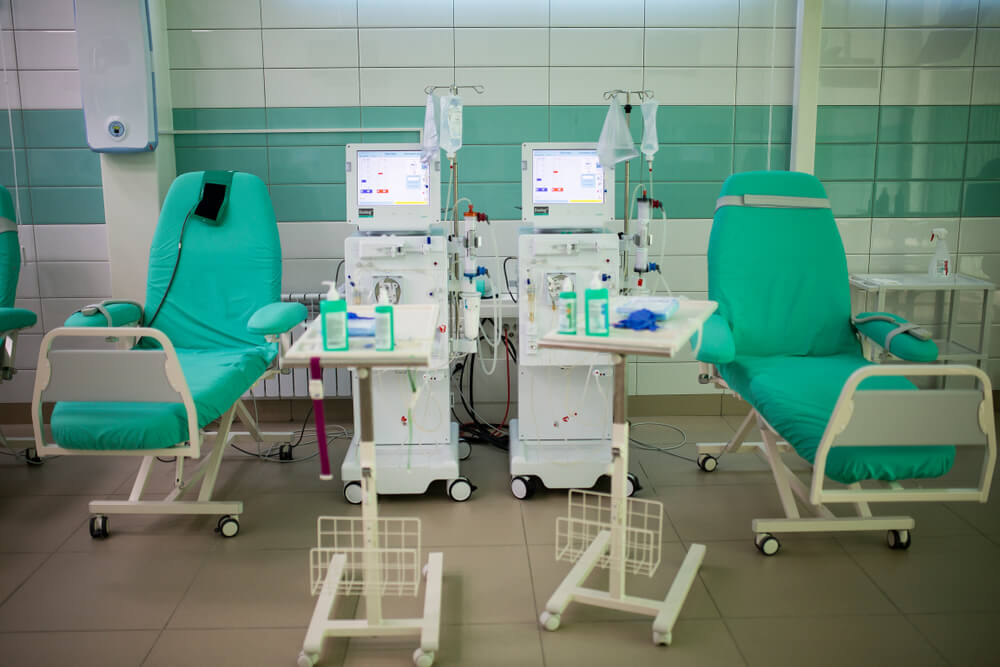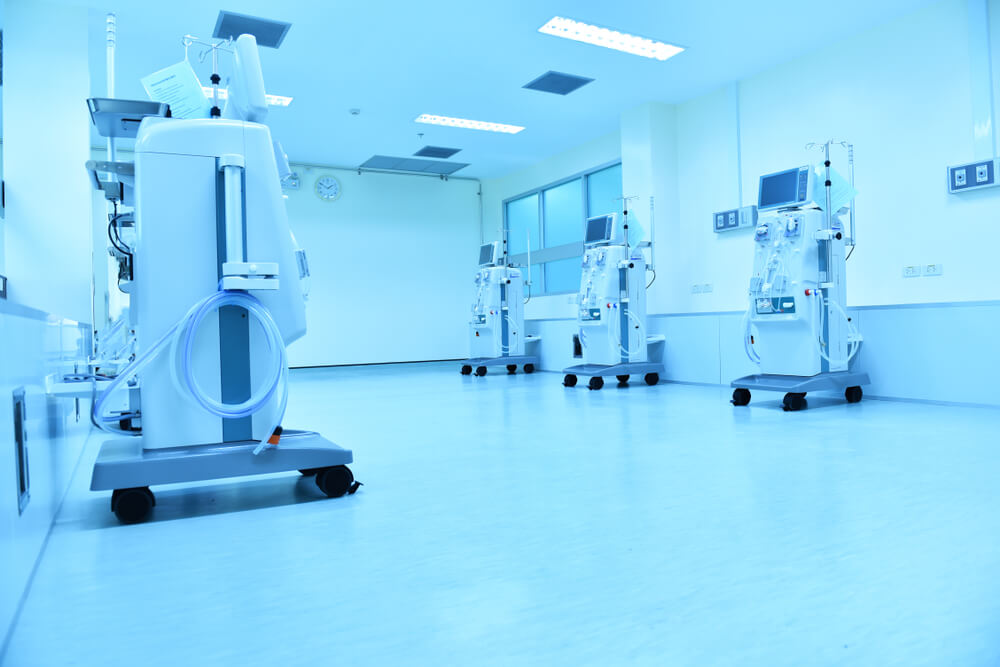
11 Jan Spotless Stations: Environmental Surface Disinfection in Dialysis Clinics
Dialysis clinics stand as vital hubs in the healthcare landscape, offering a lifeline of life-saving treatment to patients grappling with the complexities of kidney disease. While these clinics serve as beacons of hope, they also harbor an intrinsic challenge—a notable risk of infection, primarily attributed to the prevalence of blood-borne pathogens. In light of this, the imperative to uphold a meticulously clean and hygienic environment within dialysis clinics is not just a priority; it’s a fundamental commitment to safeguarding the health and well-being of patients, visitors, and the dedicated staff who form the backbone of these institutions.
The Risks of Infection in Dialysis Centers
Dialysis centers present a heightened risk of infection due to the vulnerability of renal patients to bloodstream infections. Patients with kidney disease often have compromised immune systems, making them more susceptible to infections and slower to recover from them. Consequently, ensuring a clean and hygienic environment in dialysis centers becomes an immense responsibility.
Microorganisms can survive on various surfaces within a dialysis center, including bed rails, call buttons, bathroom fixtures, and equipment. These pathogens can cause infections and diseases, posing a significant danger to the patients undergoing treatment. Unfortunately, these harmful microorganisms are often invisible to the naked eye, making it crucial to adhere to stringent standards for infection control.
Importance of Adequate Hygiene Practices
To mitigate the risk of infections, prevention through proper hygiene practices is paramount. Dialysis centers should enforce frequent hand hygiene and ensure that staff members are trained in effective hand hygiene techniques. Proper hand hygiene in healthcare settings requires more time and attention than the average person may be accustomed to. It involves the removal of hand jewelry, thorough washing with antimicrobial soap,or alcohol-based hand sanitizer.
Attention should be paid to finger nails, each finger, including the spaces in between, and the front and back of the hands. When using soap and water, hands should be washed for at least 15-20 seconds before rinsing and thoroughly rinsed and dried to prevent skin damage. When using an alcohol-based hand sanitizer, use enough product to thoroughly cover all areas of the hands and rub until dry.
While hand hygiene is important , it is equally important to consider the cleanliness of the facility before staff and visitors enter. Maintaining a high standard of cleanliness in dialysis centers requires meticulous cleaning of surfaces and equipment. To ensure surface disinfection standards are met, it is recommended to do an on-site infection control prevention assessment.
Thorough Cleaning of Surfaces and Equipment
Cleaning in a dialysis center entails several essential steps to ensure proper disinfection. Surfaces must first be cleaned before disinfection. This may be accomplished with detergent and water to remove any dirt or soil, as these can harbor potentially harmful microorganisms. After the initial cleaning, disinfection should be performed using an EPA-registered hospital or healthcare grade disinfectant on all surfaces, including dialysis beds, the exterior of dialysis machines, and other exposed areas within the treatment area. Some disinfectants contain a detergent, so a separate cleaning step may not be needed. It is important to follow the label directions including the amount of time the surface must remain wet with the disinfectant or contact time and the application method.
It is crucial to note that disinfection should only be carried out after the initial cleaning process. Disinfecting surfaces without prior cleaning can lead to the retention of blood, body fluids, or dirt, which can pose significant risks to patients. Given the compromised immune systems of dialysis patients, following proper disinfection protocols is essential to minimize the spread of blood-borne pathogens.
The Significance of Proper Surface Disinfection in Dialysis Clinics
Due to the increased vulnerability of dialysis patients to bloodborne pathogens and other bacterial or viral infections, disinfection plays a critical role in maintaining a safe environment. The cleaning service employed by dialysis centers should use hospital-grade disinfectants on all surfaces, especially high-touch areas and those more likely to be contaminated with body fluids, including blood. Surfaces contaminated by blood should be thoroughly disinfected to eliminate potentially harmful pathogens.
To prevent cross-contamination between patients, it is crucial to ensure that cleaning materials are changed for each patient site. This practice helps to maintain strict hygiene standards and minimize the risk of infection transmission within the dialysis center.
Consequences of Inadequate Cleaning Practices
Maintaining a clean and hygienic environment in healthcare facilities is vital to minimize the risk of antibiotic-resistant bacteria and the associated costs of treating drug-resistant pathogens. Healthcare facilities, including dialysis centers, can become breeding grounds for pathogens , leading to prolonged admissions and increased healthcare expenses.
Investing in high-quality healthcare cleaning services is paramount to safeguarding patients, staff, and visitors from these health risks. However, choosing the right cleaning service for a dialysis center requires careful consideration.
Selecting Specialized Contract Cleaners
When it comes to selecting cleaning services for dialysis centers, the significance of choosing the right company cannot be overstated. Opting for a cleaning company with highly specialized experience in cleaning healthcare facilities holds the key to maintaining a safe and sanitized healthcare environment. These professionals should possess an in-depth understanding of chemical safety and stringent disinfection protocols. Moreover, a thorough familiarity with the intricacies of handling biohazardous waste disposal is essential.
Experience matters significantly in this context. A proficient cleaning company brings a wealth of knowledge and expertise to the table, ensuring that the cleaning process aligns seamlessly with the unique demands of healthcare facilities. The intricate nature of dialysis clinics necessitates precision and diligence in disinfection efforts, making it imperative to collaborate with cleaning experts who are well-versed in this domain.
An adept cleaning service provider shoulders the responsibility of not only ensuring cleanliness but also safeguarding patient health. By tailoring their approach to the specialized needs of dialysis clinics, these professionals create an environment that mitigates the risk of infections and supports patient well-being.
The Importance of Surface Disinfection in Dialysis Clinics
Maintaining a clean and safe dialysis environment is crucial for the well-being of patients and the prevention of infections. Dialysis centers should prioritize frequent handwashing, enforce proper hygiene practices, and ensure thorough cleaning and disinfection of surfaces and equipment. By selecting specialized contract cleaners with a strong track record in healthcare cleaning, dialysis centers can maintain the highest standards of cleanliness and protect the health of their patients, staff, and visitors.
At Infection Control Results, we recognize the gravity of this commitment. We are your partners in achieving a healthcare setting that exudes cleanliness and promotes well-being. Contact Infection Control Results today to learn more about environmental surface disinfection in dialysis clinics.


